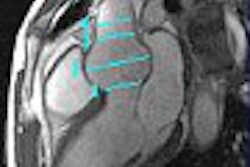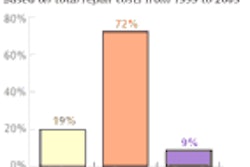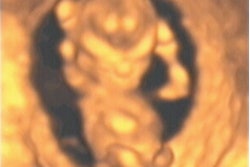NEW ORLEANS - Tissue Doppler imaging (TDI) may serve as a useful addition in routine follow-up of patients with chronic congestive heart failure, and could potentially predict future cardiac events, according to a presentation this week at the 2004 American College of Cardiology meeting in New Orleans.
"Patients with chronic congestive heart failure do very badly in the follow-up. They have a mortality which goes up to 20% per year, although (this improves with) medication. These are people who are really sick and this has a high impact on the cost of the healthcare system," explained principal researcher Dr. Christian Bruch from the Universitätsklinikum Münster in Germany.
"It's really important to identify those patients who do even worse than the others. Echocardiography is an important tool for the clinician to follow these patients. It's the most important noninvasive tool in cardiology that we have, and the best method for serial follow-up," he added.
For this investigation, Bruch and colleagues examined 132 patients with chronic congestive heart failure (CHF). They performed conventional 2-D/Doppler echocardiography and assessed the Tei index (isovolumic contraction time and isovolumic relaxation time/ejection time).
Systolic, early and late diastolic mitral annular velocities (S´, E´, and A´, respectively) were derived from pulsed TDI. A cardiac event (cardiac death or hospitalization due to decompensated CHF) was defined as the combined study endpoint, researchers said.
"What we did in our study was to compare new echocardiographic markers with established parameters because echocardiography has an established role in defining the prognosis of heart failure patients, but there are new emerging echo techniques such as tissue Doppler imaging," Bruch said. "There is only limited information available about the prognostic impact of tissue Doppler. What we found is that TDI parameters have a strong prognostic impact and are able to identify patients that are likely to undergo a cardiac event."
The patients were followed for a mean of 224 days. During that period, 31 patients suffered cardiac events. In patients with an event, ejection fraction was lower (25% ± 10% versus 32% ± 9%, mitral deceleration time was shorter (138 ± 58 versus 193 ± 72 ms), and the peak mitral early flow to E´-ratio (E/E´) (16.1 ± 6.6 versus 10.6 ± 5.0) was significantly elevated as compared to event-free patients.
In addition, Bruch and his team observed that the Tei index was elevated (1.09 ± 0.39 vs. 0.86 ± 0.26, p<0.01) and a restrictive mitral filling pattern was more frequent (51.6% versus 17.5%, p<0.001). However, in terms of stepwise multivariate analysis, the mitral E/E' ratio and Tei index were identified as the only independent predictors of a cardiac event in these patients. A poor outcome was experienced by patients with mitral E/E' ratio greater than 12.5 or Tei index greater than 0.90.
Although conventional parameters continue to remain useful, Bruch argued that clinicians may want to add tissue Doppler imaging (TDI) to routine follow-up in order to refine the results.
"Conventional parameters, in my view, also have to be redefined. There may be a new era in terms of establishing parameters. The next step for this research is to define the impact of different modalities to prognosis. There are other noninvasive parameters that have strong prognostic impact as markers, and I think we have to establish a new score which applies to different modalities," he concluded.
By Jerry IngramAuntMinnie.com contributing writer
March 11, 2004
Related Reading
Myocardial perfusion imaging shows promise in first-time heart failure, March 9, 2004
FDG-PET predicts effectiveness of beta-blockers for cardiomyopathy, January 30, 2004
Subtle LV dysfunction seen with early diabetic heart disease, August 13, 2003
Copyright © 2004 AuntMinnie.com



















